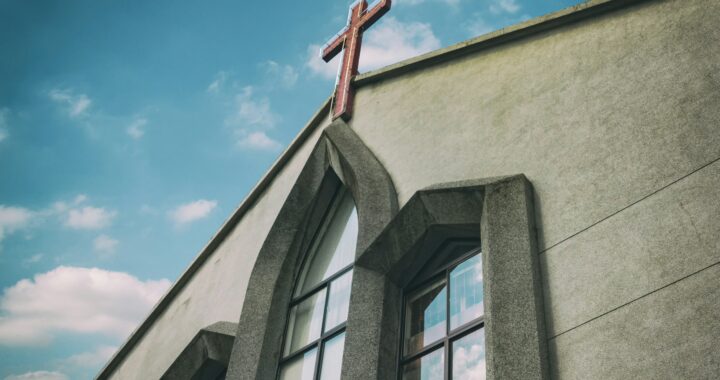Mascots Not Offensive
4 min readWhen most people hear the name the Washington Redskins, various sporting terms come to mind: Clinton Portis, Sunday Night Football, etc.
However, since the 1960s, the concept of racial discrimination has been added to the list.
As a community we understand racism is a sensitive topic, and have a responsibility to accurately represent a race in popular culture. Therefore, some people argue that a university or a professional sports team’s use of Native Americans for a mascot is discriminatory. I however, respectfully disagree.
Growing up in a family in which boys outnumber girls, sporting events dominate our evenings and family moods often parallel the performance of our favorite teams.
After 21 years of avid sports dedication, I understand a team’s name to represent their identity with no racial implications. But not everyone shares my view.
During the 1960s the National Congress of American Indians launched a campaign against media images considered negative representations of their people. Although initially focused on television and cartoon representation, the shift was made to athletics.
With terms such as Apache, Savage and Indian used in sports, is it fathomable to think an institution would choose a symbol that would label the school as racist?
No would be my response, and if interpreted as offensive, I don’t think that was the intention.
It is true that franchises such as the Atlanta Braves, Cleveland Indians and Florida State Seminoles chose their teams’ mascots prior to 1960, but it is unfair to say they chose them out of unconscious racism.
A team’s mascot is part of its identity. The more success a team has, the more publicity their logo receives and does not that increase diversity by default?
The National Congress of American Indians disagree, claiming these symbols are derogatory and offensive rather than increasing awareness.
If that is the case, it is important to acknowledge the other areas where Native American images and names are used.
Various modes of transportation rely on these names as well. Why is that acceptable when sports teams are not?
In an Associated Press article, Mohawk Chief Jacques Boulerice responded to the idea of names such as “Brave, Chiefs and Apache” as insulting to Native Americans. He offers the viewpoint of a Native American living in California.
“To have a car named after Chief Pontiac must have him rolling in his grave,” Boulerice said. How about Indian motorcycles? You straddle it and ride it. Now that’s GOT to be derogatory! How about Apache helicopters? That’s a weapon of destruction, so doesn’t it indicate that Apaches are destructive?”
Boulerice does not feel that using Native American names as mascots is disrespectful.
“Anything that brings more Native culture to the forefront is OK by me,” said Boulerice. “If a college teams calls itself The Mohawks, I’m damn proud that they would choose my people to be the symbol of their team.”
Boulerice is not the only Native American to weigh in on the controversy. According to Sports Illustrated 83 percent of Native Americans who responded to a poll, feel pro-sports should not stop using Indian nicknames, characters, symbols and mascots.
What most people, Native American or not, fail to understand is that if legislation is passed outlawing culture-offensive mascots any logo could be forced to change. For example, if animal rights get involved teams such as the Bears, Eagles and Falcons may need to change too.
Concern over the representation of Native Americans has not gone ignored. There are several teams who have changed their names in response to racism. The Syracuse Orangemen became the Syracuse Orange, St. John’s University Red Men became the Red Storm and the Eastern Michigan Hurons became the Eagles.
If a school decides to change their mascot on their own I think that is commendable. I do not feel that leagues should force them to, but rather encourage them to follow the example of the Florida State Seminoles.
In 1972 leaders of the Seminole Tribe in Florida attended a Florida State University basketball game and expressed concern with the depiction of their people by the school’s mascots. Due to the unique relationship that developed between the University and the Seminole Tribe of Florida, the mascot remains in tact to this day.
NCAA Senior Vice President Bernard Franklin said.
“The decision of a namesake sovereign tribe, regarding when and how its name and imagery can be used, must be respected even when others may not agree,” said Franklin.
The NCCA review board voted in favor to allow the Seminole name to remain in August 2005 because the Seminole Tribe of Florida officially sanctions the Seminole as the University’s nickname.
The Seminole compromise illustrates another option to consider before stripping a school of its namesake.
Native Americans are not the only group who are represented by negative stereotypes.
The Notre Dame Fightin’ Irish has a scrappy leprechaun as their image, and the Irish were once a marginalized group of people in the United States.
The University of Louisiana’s Ragin’ Cajuns admits their mascot is based on a term considered slang for the people who live in the area.
I feel schools that use names and images of Native Americans are proud of who they represent. Perhaps rather than changing the symbols and names of universities we need to change the way we view ourselves and other people.
Stefanie Roche is a senior.


